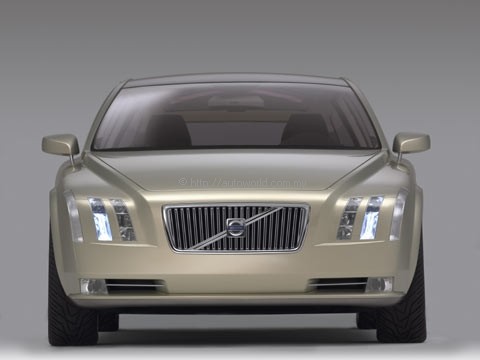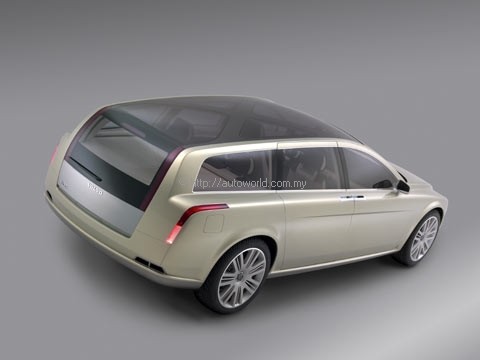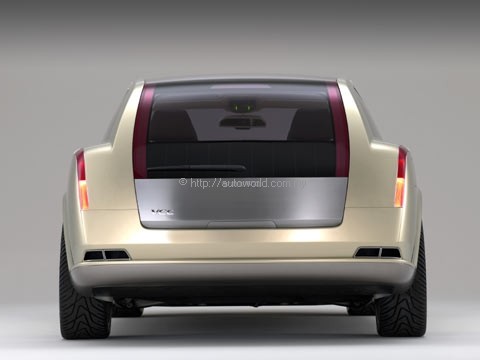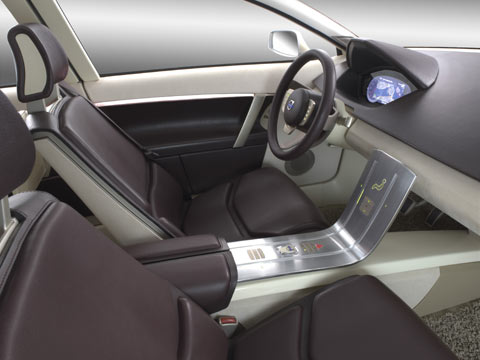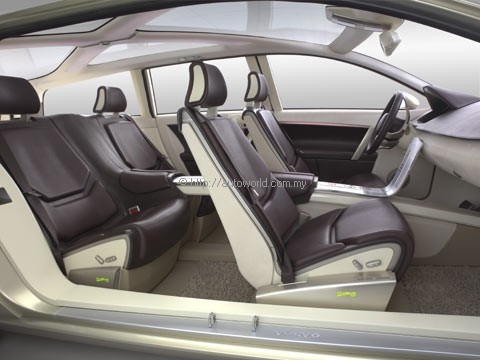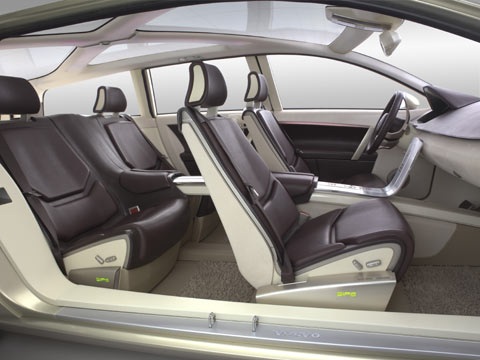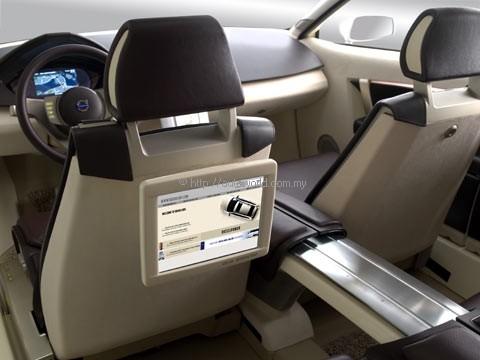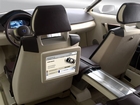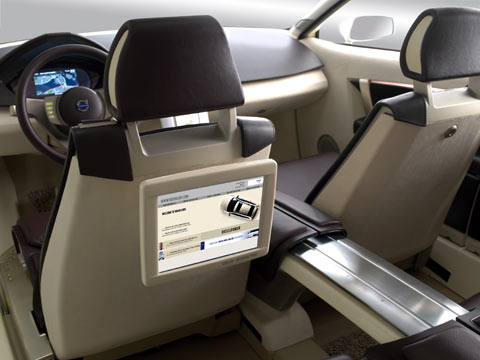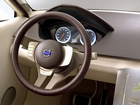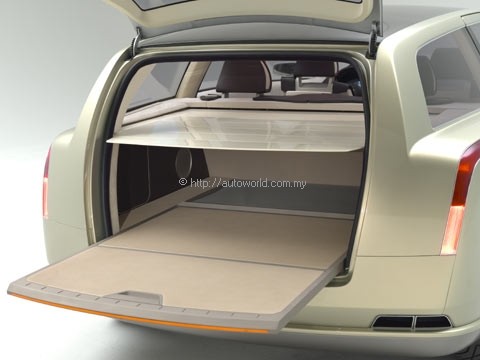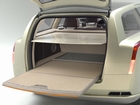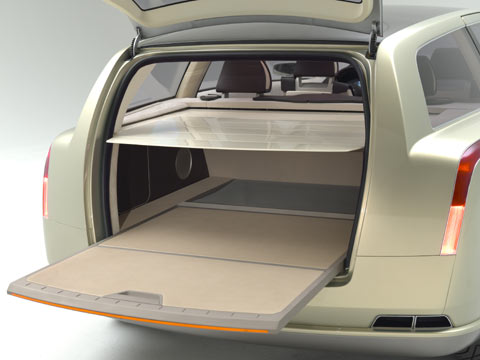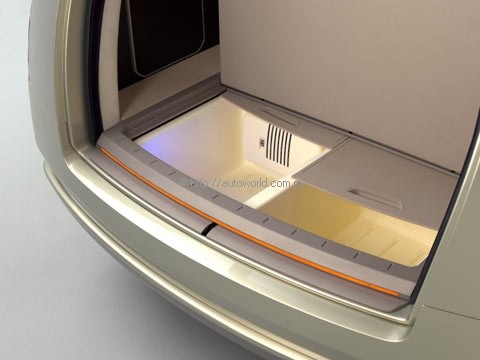The Versatility Concept Car
“Elegance and high quality is what ultimately seduces customers”
That quote comes from José Diaz de la Vega, Creative Director Strategic Design at Volvo Cars and refers to the design vision of the Versatility Concept Car (VCC), a possible future Volvo V-Range car.
The exterior design of the VCC is dramatic and simple at one and the same time – perhaps a reflection of the fact that two of Volvo’s design studios – in Barcelona, Spain and Göteborg, Sweden – have joined forces in its creation.
 |
As with all Volvos, inspiration has been obtained from the company’s rich design heritage, eg the distinctive rear design with a glass tailgate can trace its roots to the 1971 Volvo P1800 ES, while the large, distinguished grille is descended from the 1968 Volvo 164. “The Volvo 164’s grille forges a direct link to Volvo luxury, but a strong grille design is also an important display of brand heritage,” explains de la Vega.
Among the most noticeable features in the front are the slim, vertically-stacked headlamps. The inner of the two lamps uses a system known as “Static Bending Light” with three light units aimed at different angles. The topmost points straight ahead and performs as a conventional dipped beam. As the car turns to one side or the other, sensors linked to the steering activate units two and finally three to illuminate the direction in which the car is turning. The indicators front and rear and door handles echo the linear character of the headlamps, and are visually connected via the “Volvo Arch”.
The VCC design is also characterised by the absence of a B-pillar, made possible by hinging the back doors at the rear instead of the front. This design promotes the display of the remarkable interior, but is, for safety reasons, not intended for production cars.
The roof panel features an X-frame with ambient lighting. It is operated by slider controls in the overhead console. The unique solar panel in the roof is semi-transparent and enhances the feeling of spaciousness as well as providing power for the Volvo Ambient Air Cleaner system. This continually cleans the air within the car even when the engine is not running.
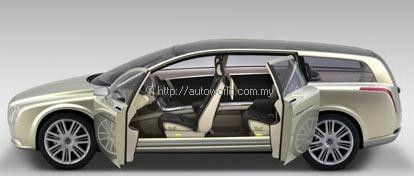 |
The interior of the VCC is an expression of Scandinavian luxury translated into Volvo’s own design language: a sensation of well-being that stems from high-quality materials, light, airy interiors and an all-round “sensorial experience”.
The complete form language is the expression of ‘elegant simplicity’. This is an evolution of Volvo Cars’ current product programs, in particular the instrument panel of the new XC90. By minimising the number of design elements, the visual pollution is reduced. The surface finishes and colours harmonise with the other elements of the interior. “Our aim is to create an atmosphere of total tranquillity for our customers”, says de la Vega.
The interior has no visible conventional air vents. Instead, air is distributed via concealed outlets. The latter prevents unwanted reflections in the windscreen and provides silent and more uniform air distribution. Additional air is ducted through the tunnel console.
A fixed-centre steering wheel allows more controls to be positioned on the wheel, including selector buttons for the Automated Shifted Manual gearbox. The ergonomic benefits are that the switches and controls are always in the same position. Safety advantages include the possibility for the airbag to be designed for optimum performance.
Of anodised aluminium, the centre console ‘floats’ gracefully through the car – but it never reaches the dashboard. A 2-cm gap divides the slim console from the dashboard, creating a feeling of lightness and space. It carries two touch-sensitive slider controls that regulate temperature for the driver and front passenger. Requiring no more than feather-light touch, the control slides up or down, depending on whether the driver or passenger wants the air to be warmer or cooler. The temperature is indicated with LED lights that change colour from cool blue to red-hot. The fan is operated with a similar touch control, as are the power windows. The centre console also carries two adjustable armrests upholstered in thick leather, and beneath them there are two individual cup holders.
The sub-woofer for the Premium Sound System is located in the rear of the tunnel for optimised audio performance. However, there is no traditional audio unit or DVD player. Instead, the car is continuously connected to the home where music and movies are stored as electronic files. The car connects to the home using W-LAN, 3G or GPRS and the files are therefore accessible wherever the car is.
Information is available to the driver in the display module, which features digital instruments of analogue design for road speed, engine speed, engine temperature and fuel quantity. These gauges are a digital interpretation of the metal dials in Volvo’s performance cars: the S60 R and V70 R.
The digital screen for the instruments has added flexibility: when the driver wants to use the navigation system, a map is superimposed over the speedometer readout and rev counter. In the same way, the display can create a pop-up window containing information about the music being played in the audio system. When the car is started, the system confirms that all the car’s safety systems are functioning properly by displaying all their icons in the display screen.
The very original and luxuriously designed seating arrangement is beautifully crafted using the traditions of the saddle-maker. The front seats are mounted on rails integrated into the outer sill panel and centre tunnel console. This provides a flat and unobstructed floor for the rear passengers. The safety belts are fully integrated into the seat frames, enabling the creation of a design without any B-pillars.
As part of the functionality of the rear seats, they can slide individually, powered by electric motors to provide optimum flexibility between luggage capacity and legroom. The headrests fold to improve visibility, and concealed beneath the armrest is an optional pop-up integrated child seat for children from three years of age.
The primary objective for the luggage compartment is to create the same ‘sensorial impact’ as that of the ‘passenger’s lounge’. The application of colours and high grade materials together with minute attention to detail, conveys an exclusive atmosphere without sacrificing practicality. For example tumble-mill soft leather is selected for the floor.
Features include a load floor that is electrically operated via controls mounted on the D-pillar. The floor slides out from the luggage compartment to make the loading procedure more convenient. Beneath the load floor are two storage compartments, one heated and one chilled.
The luggage compartment also features an integrated safe-box integrated in the right-hand side panel, while the left side contains a lift-out overnight case, trimmed in matching leather. The luggage cover is also electrically powered. It can be operated by from the driver’s seat and also from the switch in the D-pillar. When not in use, the panels are stored in a hidden recess within the rear seat.
The door panels contain large leather-lined foldout storage compartments, together with ambient lighting, which illuminates the top edges of the door insert. The grab handles are produced in brushed anodised aluminium with contrasting polished edges to compliment the centre console. The door inserts are trimmed in the same saddle quality leather as is used on the seats and instrument panel upper.
The old expression “a hand to hold” has undergone a new high-tech interpretation in the VCC. Volvo’s ‘V-Pulse’ is like an ‘electronic friend’ who will tell you the status of the car. It is a part of the car that you can ‘bring home, or show to your friends’.
A basic luxury is to know that your car and friends are untouched and safe from harm. The V-Pulse gives you someone to hold your hand in the dark, reassuring you that everything is ok, by generating a calm and regular heartbeat. The heartbeat is transmitted as a gentle pulsating sensation to your hand. The frequency of the pulse would immediately rise if something was wrong. For example if the car was left unlocked or the alarm had gone off. You can then open the V-Pulse and see in the small display exactly what has happened. Communication with the car takes place via the GSM network.
This soft and pleasantly rounded Scandinavian jewel, bearing Volvo’s signature Iron mark from 1927, is also used to lock an unlock the car. By a gentle squeeze of the V-Pulse the car is unlocked – and the feedback by raised pulse is immediate. The V-Pulse has its natural place in the centre console. In position, a gentle press of the V-Pulse starts the car.
 |
(To read about the VCC Powertrain, follow the link provided further down this page)





